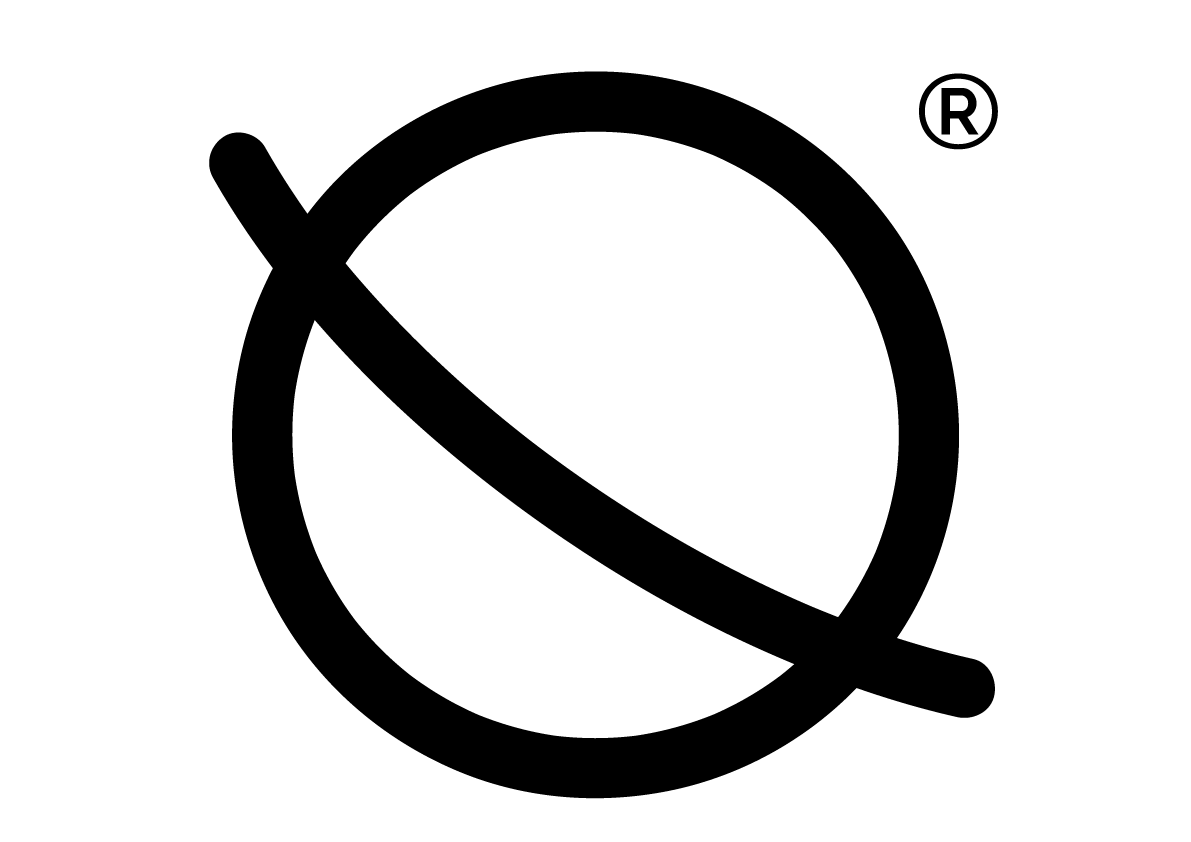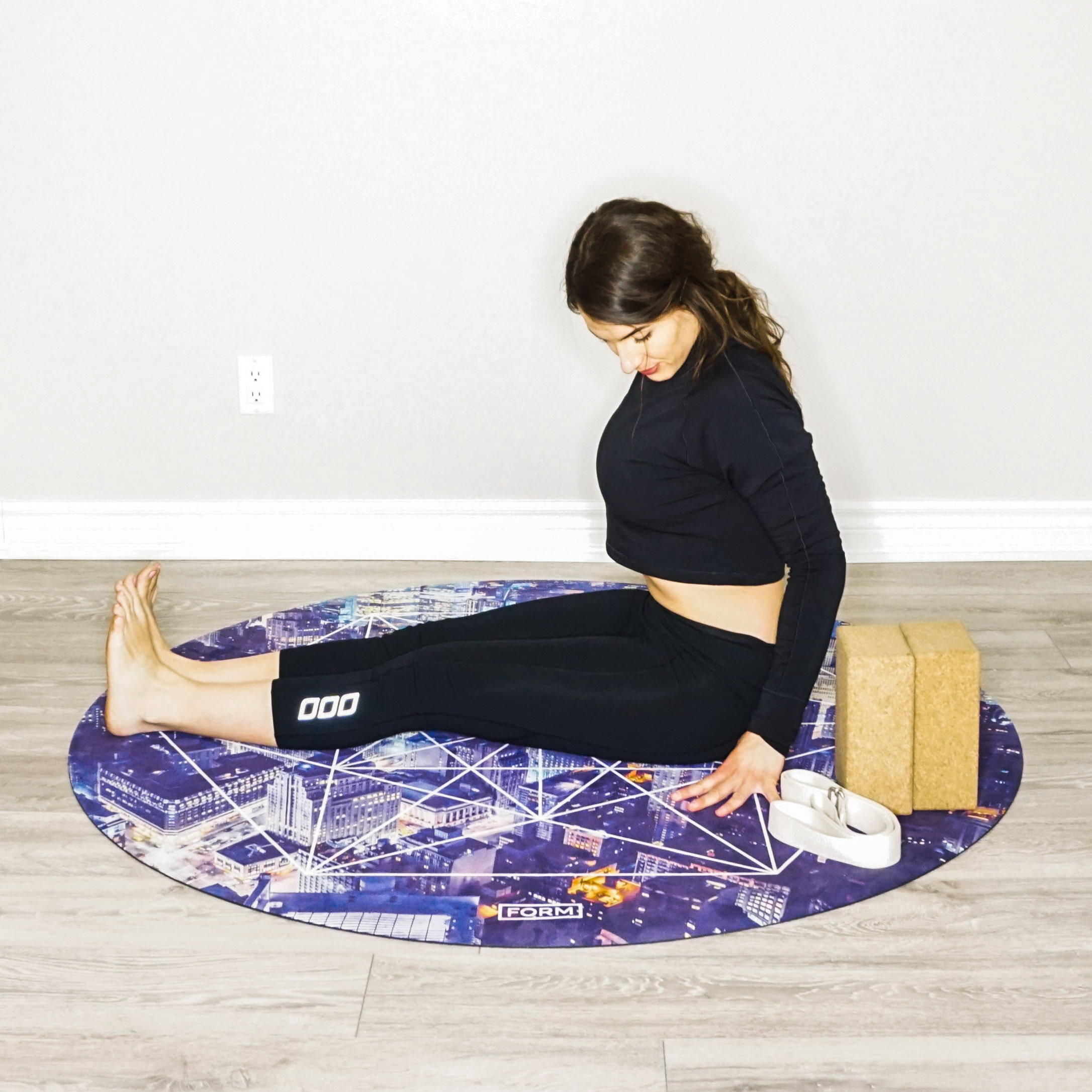How to use the Form Grid for Uttanasana or Standing Forward Bend
Uttanasana, or standing forward bend is a pose you will come across in almost every yoga class. Some yogis may be able to go all the way down, while others may struggle to get lower than a 90 degree angle. This is often a result from tightness in the hamstrings, or lower back. To maximise the benefits of this pose, we want to make sure that we are stretching the hamstrings and calves. To minimise susceptibility to injury, we want to make sure we are finding alignment with the legs and the spine.
Here are my 6 steps to achieve my perfect Uttanasana with a Form mat:
Step 1: Find the right alignment in the legs to balance
Start facing forward (towards the Form logo) sit down with your legs extended. If you're using a round mat: sit your glutes in front of the first horizontal line at back of the mat so that your back is lined up with it:
If you're using a rectangular mat: sit your glutes in front of the first horizontal line from the back so that your back is lined up with it.
Once you've set up your starting position, let's get moving:
Measure hip distance by placing the tips of the thumbs down on the mat at the outsides of the hips
Keep the thumbs down and place the rest of the fingertips down onto the mat
Bend the knees, placing the soles of the feet down on the mat, and lift the body up as you keep your hands down and thumbs in place:
Keep your knees bent and hands down on the mat as you widen the feet and align the outside of the feet with the thumbs
The heels of the feet line up at the same horizontal line as your back did when sitting:
Come to a standing position while maintaining your feet at hip distance
If you feel unsteady at this distance, feel free to widen the feet slightly further apart
Step 2: Engage the body in preparation for bending forward
Stand up tall with the back straight and pelvis neutral
Bring the neck into alignment with the rest of the spine by tucking the chin and bringing the lower jaw parallel with the mat
Ground the feet from the mounds of the big toes, little toes and corners of the heels and slightly curl the tips of the toes to engage the arches of the feet
Slightly bend the knees, engage the quadriceps and glutes
Bring the shoulders up, back and down and away from the ears as you broaden the chest
Step 3: Begin to fold forward
Engage the abdominals as you tuck the ribs and pull the belly button in
Bring the hands to the hips and slowly begin to bring the upper body downward- hinging from the hips and leading with the chest:
Step 4: Find alignment
Continue to bend and stop just before your back begins to round- it is important to maintain a straight spine / flat back with the neck in line
Lean forward as you shift your weight to the balls of your feet, bringing the hips over top of the ankles
Step 5: Find hand placement that maintains a straight back
On the thighs
On the shins
On the mat
Against a wall
On top of blocks
Gently gripping onto both ends of a strap that runs under the feet (without tugging or forcing)
Step 6: Finding an alternative position if the hamstrings are too tight
If straight (but microbent) knees, cause too intense of a stretch, bend the knees as much as you need
Bring the chest towards the thighs or rest the chest on top of the thighs, while maintaining a straight spine and neck – hands can rest on the mat or clasped behind the calves
Lean forward with weight towards the balls of the feet
While maintaining your chest on your thighs and straight spine, straighten the legs until you feel an appropriate amount of stretch
As you can tell, Uttanasana is an asana that needs to be tailored to what suits your body. Following these basic alignment tips, while working with your body to find a position that works for you is critical to your development as a yogi. By finding your proper positioning, it helps you to understand where you are at and allow you to push your boundaries and progress more mindfully and carefully.
Christina Rosso is a yogi, yoga tutorial creator and curator, Holistic Nutritionist and alignment expert. Follow her: @YogaAlignment and @YogaAlignmentGirl for more asana tips, tricks and modifications!












